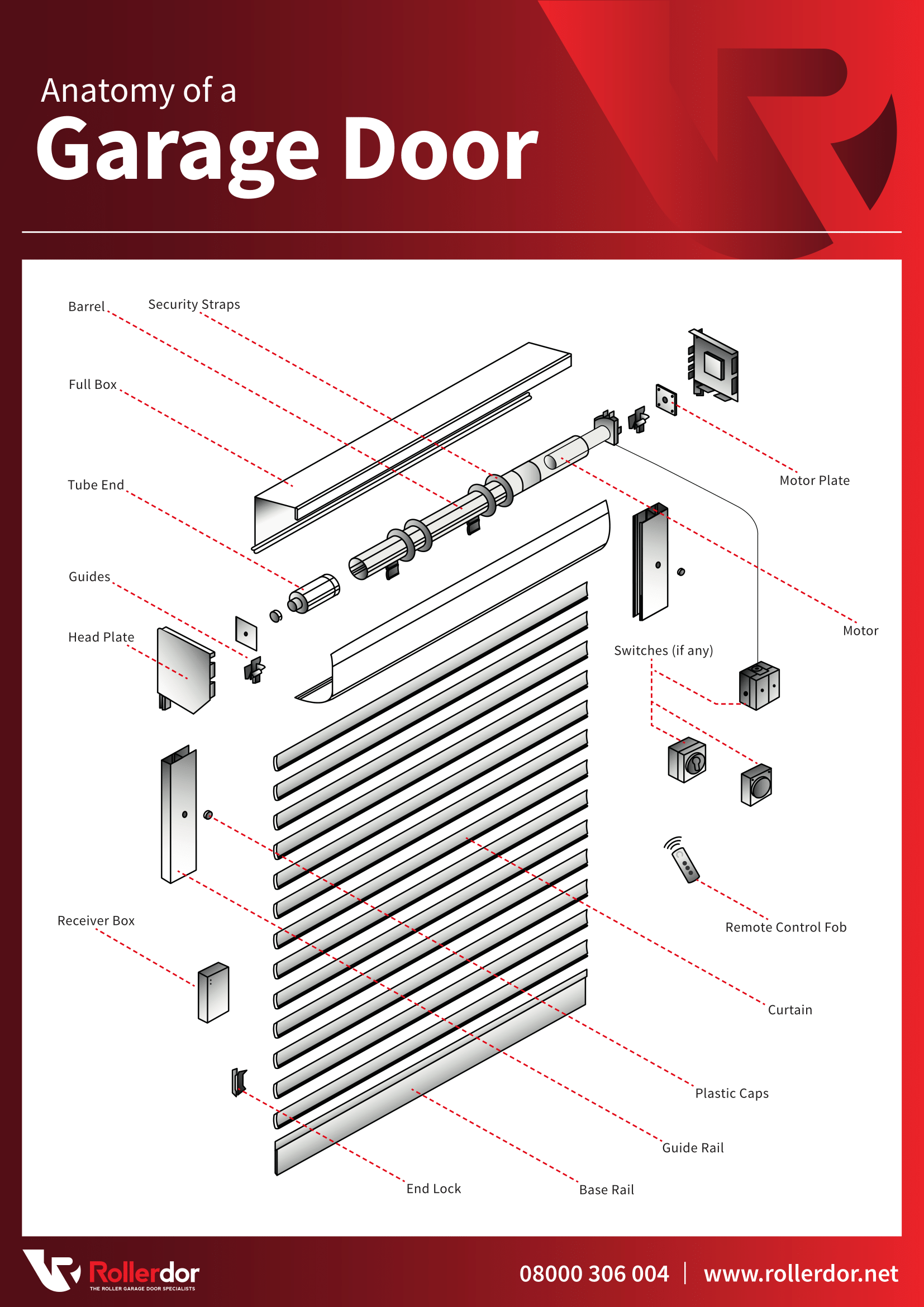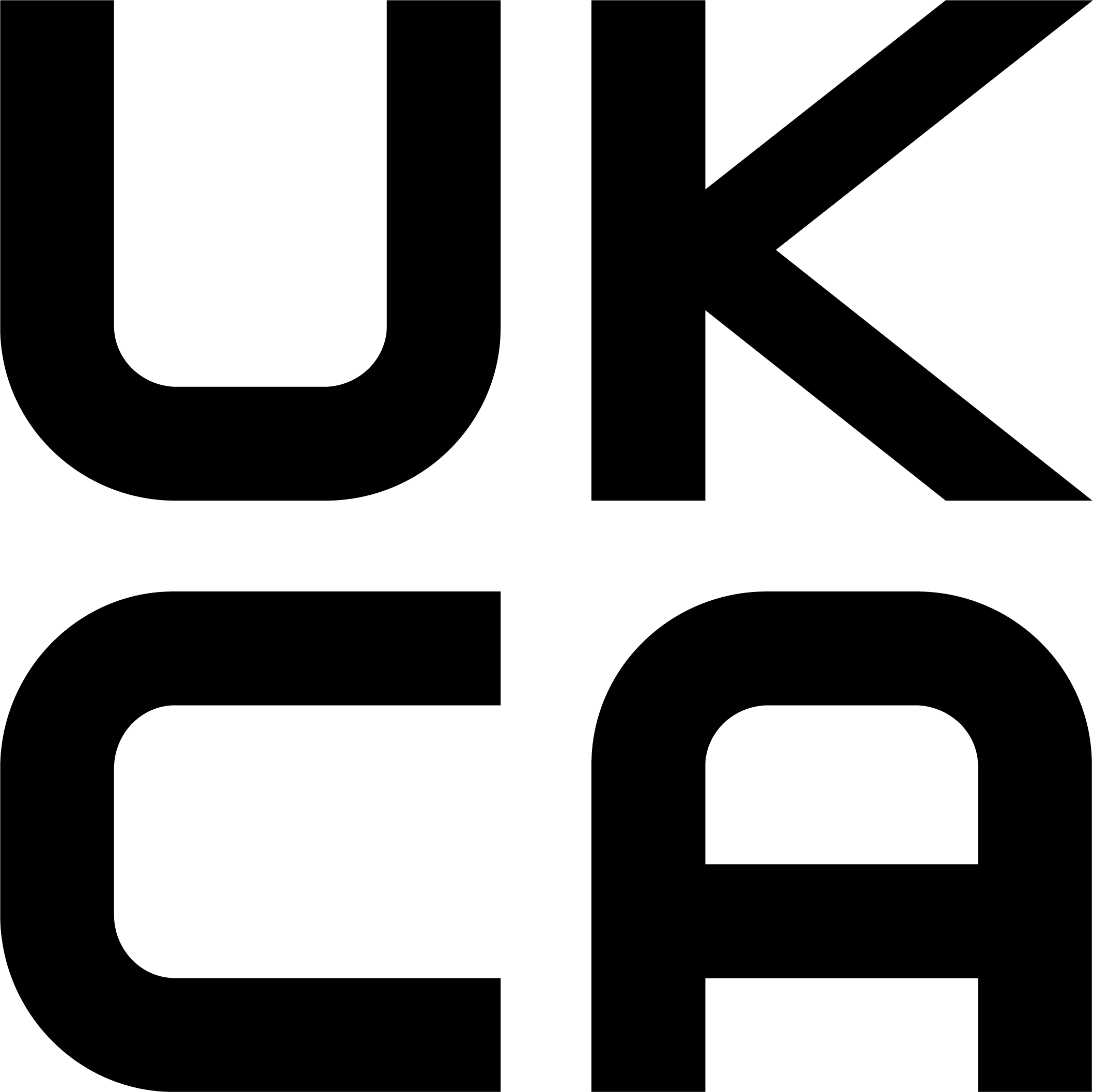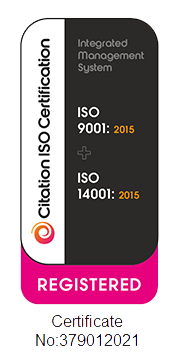Anatomy of a Garage Door – Infographic
Whether you’re fitting your own roller door or suspect a problem with your current model, knowing the elements that make up your roller door and the role they play with the functioning of your garage door can really help ensure that you are installing and using your door correctly.
To help you get to grips with all the different components, here we’re looking at the anatomy of a roller garage door.

Barrel – The barrel is the cylindrical holder of the curtain of the door. When you activate the door, the barrel rotates downwards, lowering the curtain and closing the door, and when the door is opened, the barrel rolls upwards, raising the curtain.
Security Straps – Also known as locking straps, the security straps help to securely fasten the shutter curtain to the barrel.
Curtain – The curtain is the name given to the collection of slats that raise and lower to cover the garage opening.
Motor Plate – The motor plate goes at the end of the motor, which is connected to the barrel. The motor plate allows for the structure to be securely mounted to the wall.
Motor – The tubular motor is fitted to the barrel and is used to turn the barrel and lower or raise the shutter.
Switches – The switches are what the garage owner uses to raise and lower the door without the remote. It’s important to note that these aren’t always installed.
Remote Control Fob – The remote control fob allows the door to be activated from inside or outside of the garage, and is especially handy for opening and closing the garage door without leaving the car.
Plastic Caps – The plastic caps are used to cover up any screw holes.
Guide Rail – The guide rails are on either side of the door frame to help keep the door curtain in a straight line to ensure a secure close. These also hold the weight of the curtain itself.
Base Rail – The base rail is the bottom slat on the curtain and is fitted with a rubber seal for added weather proofing.
End Lock – These are fastened to every other slat to stop the curtain sliding around.
Head Plate – Sometimes referred to as a cheek plate or end plate, the head plates are placed on either side of the barrel and are load-bearing parts designed to secure the structure to the building to take the weight of the shutter.
Guides – The guides are attached either side of the curtain, and the curtain runs up and down the guides. They are ‘u’ shaped to hold the curtain.
Tube End – The tube end is another connection of the barrel that acts as an end plate and allows the barrel to be secured to the head plate without the functionality of the barrel being jeopardised.
Full Box – Otherwise known as the top box assembly, this holds all the components such as the barrel, tube end, security straps and more to neaten the appearance and protect all the internal mechanisms from damage. This is fully boxed to prevent entrapment, as part of the machining directive.
For high quality roller doors for both domestic and trade clients across mainland UK, look no further than Rollerdor Ltd. We offer high levels of customer care and a friendly and dedicated team to make sure that every step of your transaction with us is simple and straightforward. For more information on our products and services, get in contact today by calling 0800 030 6004 and we’ll be happy to help.
Garage door price calculator
Want to get a new garage doors quote? Use our price calculator to get a no-hidden-fee price and order online!





